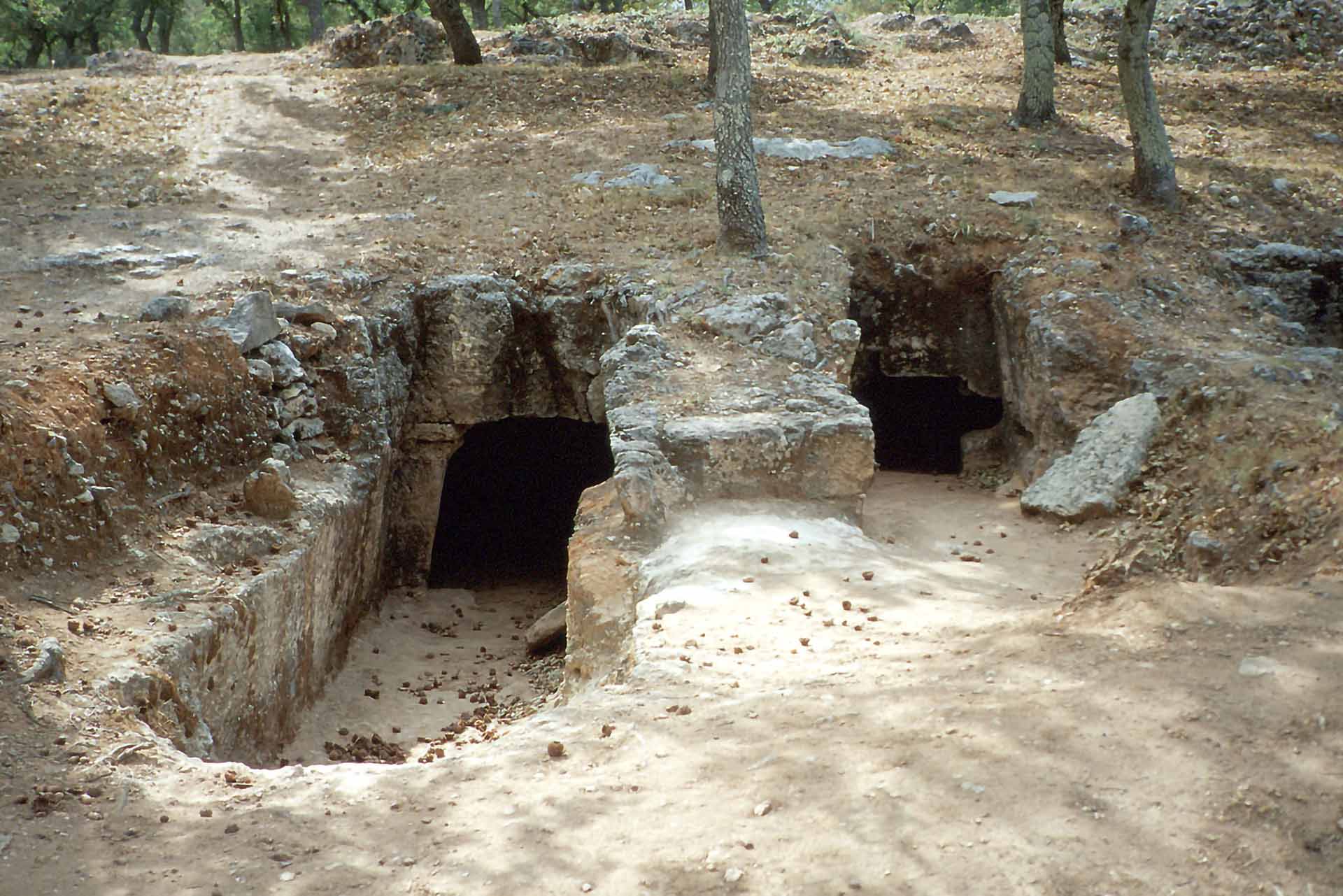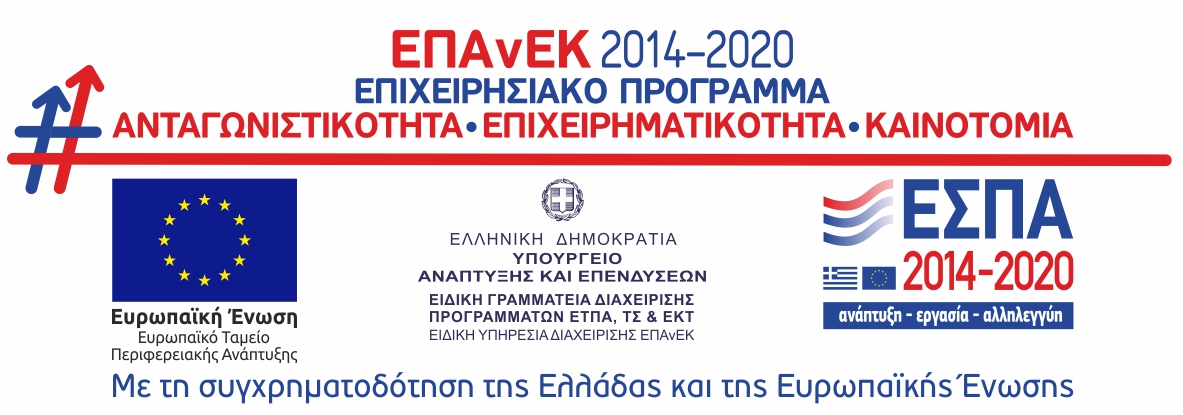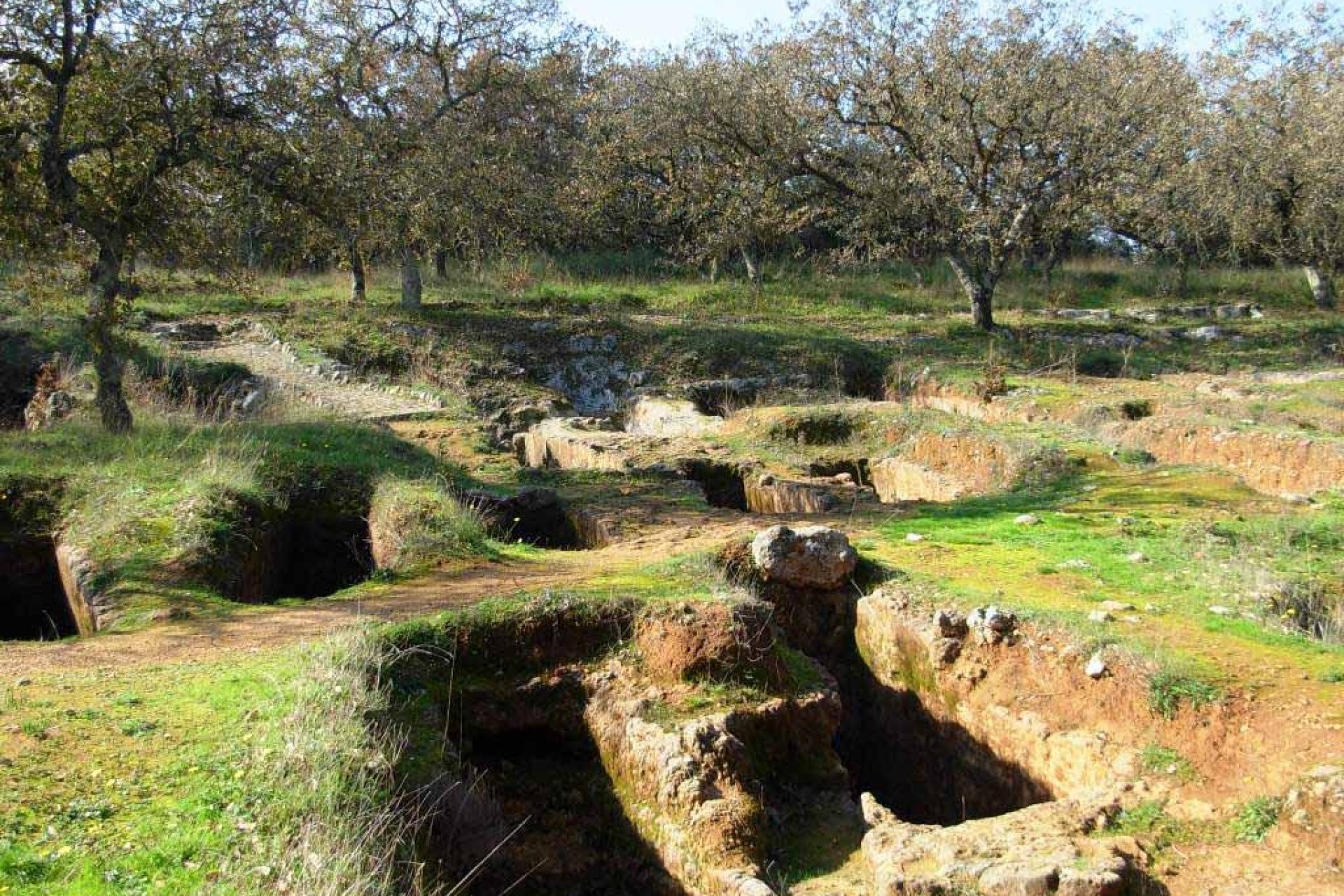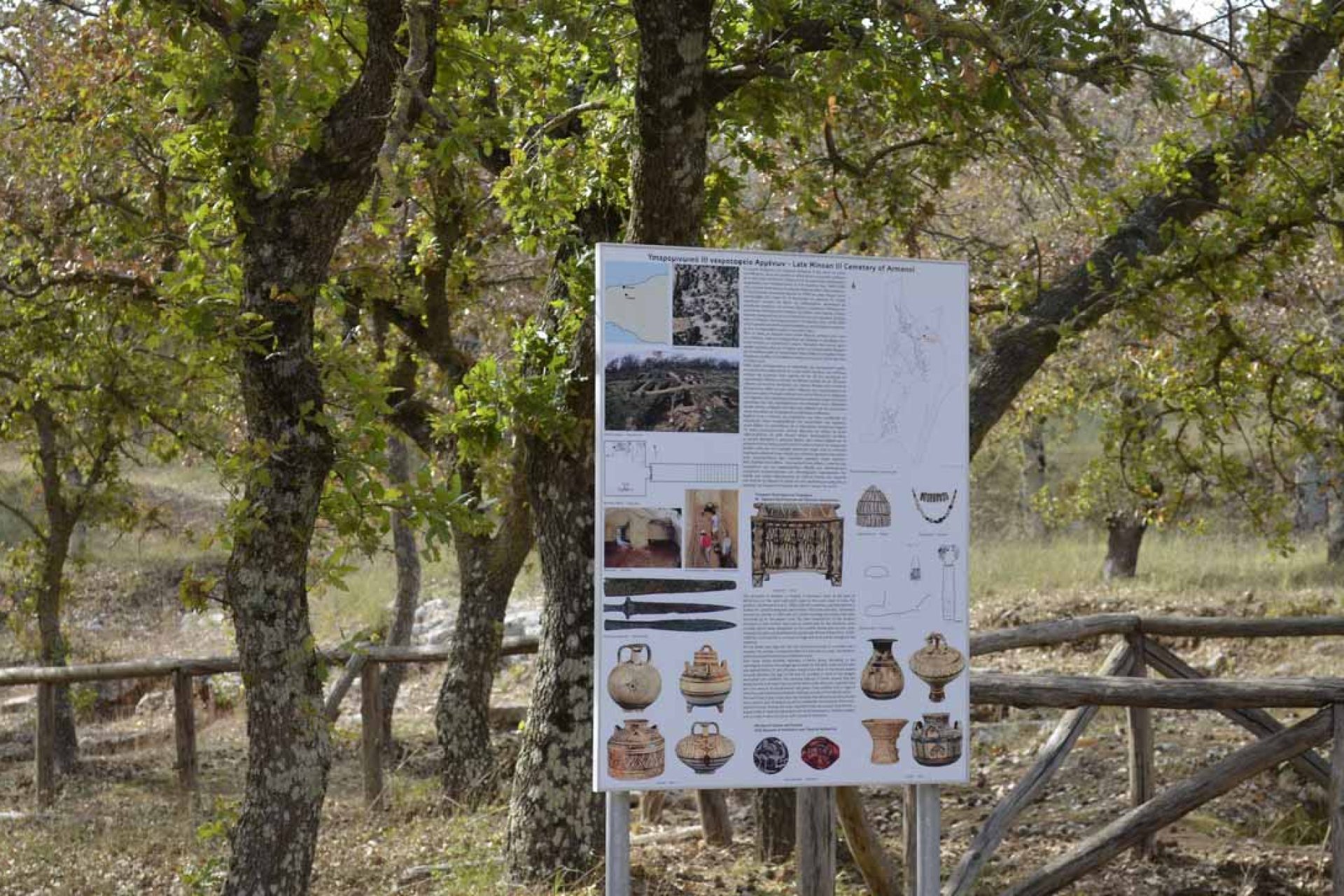Armeni Late Minoan cemetery
The Minoan Necropolis of the Armenians is located 9km south of the city of Rethymno, on the natural and road axis that connects the north and south coast of Crete. This is the largest excavated cemetery of the Late Minoan III A-B Period (1400-1200 BC), which is spread over a low hill at the location of Prinokefalo. The existence of the archaeological site was revealed in 1965, when at Somata primary school, a twelve-year-old student was holding a vase and playing with it. His teacher saw it, understood that it was a find of great archaeological value and asked where he found it. They then notified the Archaeological Service of Rethymno and the student and his father delivered the findings to the Archaeological Museum of Rethymno. All the tombs, with the exception of one brick vault, belong to the subterranean type, carved chambered with a corridor, which was accessed by steps or a ramp.Each grave most likely represented a family group. The variety of finds that were placed as offerings to those buried in the Armenian cemetery is abundant, not to mention the cases of open graves.

The area was inhabited for the first time by Armenian soldiers who came with Nikephoros Phokas to liberate Crete (961 A.D.). In the past, the main occupation of the villagers was the collection of acorns, which were used for tanning. Excavations continue and today the goal of the latest excavation work is to identify and uncover the corresponding city.



